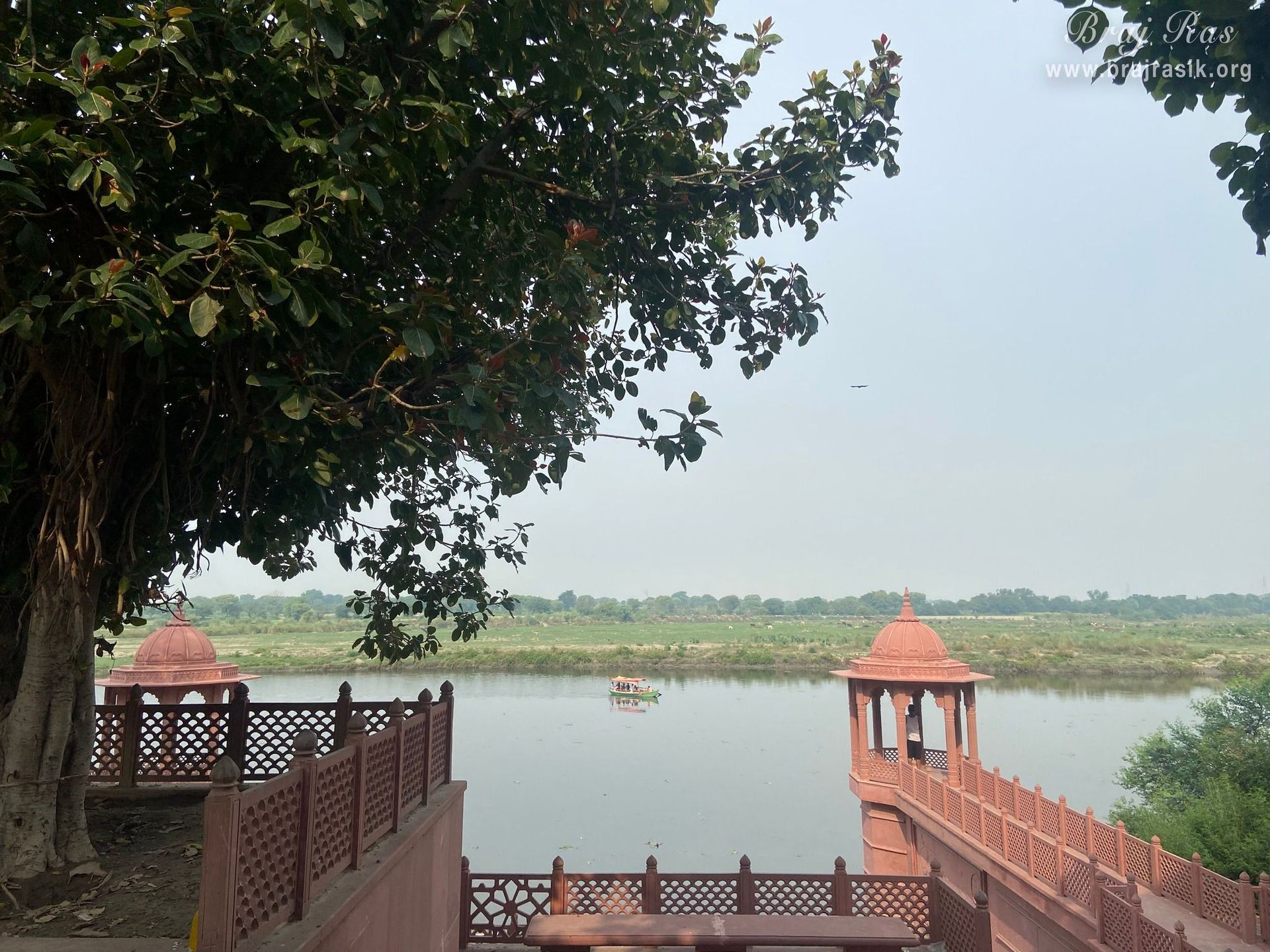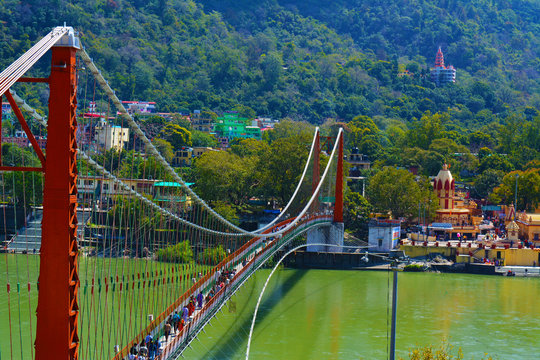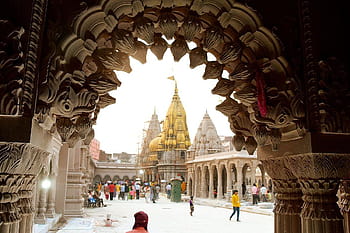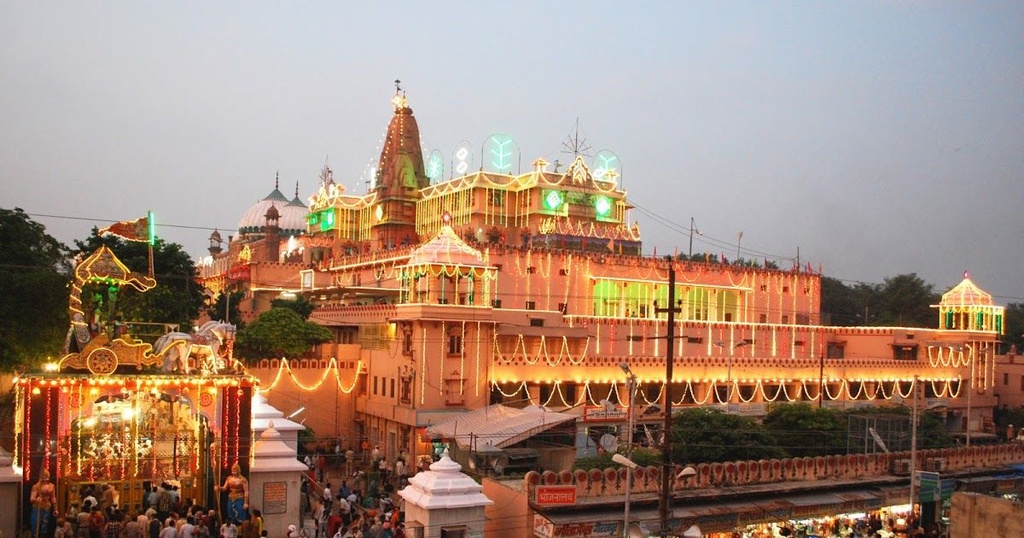Haridwar-Vrundavan-Gokul-Kashi-Prayagraj



13 Day 12 Night
Day 1:Bhuj-Delhi by train (1193km)(20hrs)
Day 2:Delhi Arrival.Then go to Haridwar by bus.(222km 6hrs).Dinner.
Day 3:Haridwar city tour
Chandidevi: Chandi Devi Temple is highly revered by devotees as a Siddh Peetha which is a place of worship where desires get fulfilled. It is one of three such Peethas located in Haridwar, the other two being Mansa Devi Temple and Maya Devi Temple.
Mansadevi: The temple is known for being the holy abode of Mansa Devi, a form of Shakti and is said to have emerged from the mind of the Lord Shiva. Mansa is regarded as the sister of the Nāga (serpent) Vasuki. She is also believed to be the daughter of Lord Shiva in his human incarnate. The term Mansa means wish and it is believed that the goddess fulfils all the wishes of a sincere devotee. There is a folk tale about this, once Mansa, a common girl who was unaware about her complete truth from her guardians decided to meet Lord Shiva and ask him about her truth. To meet Lord Shiva, she sat for Sadhana and after years of spiritual exercise, she got the fortune to meet Lord Shiva and clarify her truth from him. After learning her truth, she attained the powers of goddess of welfare for the world. Devotees who pray to Mansa Devi for fulfilling their wishes tie threads to the branches of a tree located in the temple. Once their wishes are fulfilled, people come back again to the temple to untie the thread from the tree. Goddess Mansa is also offered coconuts, fruits, garlands and incense sticks for prayer.
Kankhal: In the Vanaparva of the Mahabharat, where sage Dhaumya tells Yudhishthira about the tirthas of India, Gangadwar, i.e., Haridwar and Kankhal, have been referred to.[7] Kankhal also finds mention in the poem Meghaduta (Cloud messenger), of the 3rd century AD, classical Sanskrit poet and dramatist, Kalidas.
Day 4:After breakfast go to Rishikesh.
Rishikesh city tour:
Ramjhula: Ram Jhula (Hindi: राम झूला) is an iron suspension bridge across the river Ganges, located 3 kilometres (1.9 mi) north-east from the town Rishikesh in the Indian state of Uttarakhand. The bridge connects the Sivananda Nagar area of Muni Ki Reti in Tehri Garhwal district to Swargashram in Pauri Garhwal district, crossing the river from west to east. Built in the year 1986, the bridge is one of the iconic landmarks of Rishikesh.
Tapovan: Tapovana (Sanskrit) comes from the two root words tapas, meaning 'penance' and by extension 'religious mortification' and 'austerity', and more generally 'spiritual practice', and vana, meaning 'forest' or 'thicket'. Tapovana then translates as 'forest of austerities or spiritual practice'. Though pronounced the same in Hindi, tapovana should not be confused with tapovan (from tapovat),
Ganga ghat: Rishikesh is a city in India’s northern state of Uttarakhand, in the Himalayan foothills beside the Ganges River. The river is considered holy, and the city is renowned as a center for studying yoga and meditation. Temples and ashrams (centers for spiritual studies) line the eastern bank around Swarg Ashram, a traffic-free, alcohol-free and vegetarian enclave upstream from Rishikesh town.
Back to Haridwar
Dinner.
Day 5:Free Day.After dinner go to vrundavan.(night journey)by bus
Day 6:Vrundavan city tour
Banke bihari: Banke Bihari ji , Vrindavan , this is such a holy land, the mere visit of which destroys all sins. After all, there would be such a person who would not want to come to this holy land and would not like to satisfy himself by having darshan of Shri Banke Bihari ji. This temple is situated in a beautiful area of Shri Vrindavan Dham. It is said that this temple was constructed around Samvat 1921 with the collective efforts of the descendants of Swami Shri Ram Ji.
Nidhivan: The forest has numerous Tulasi trees which are short in height, but are found in pairs and have entangled trunks. Besides the Tulasi plants, the premises also houses a temple called Rang Mahal, where it is believed that Radha and Krishna spend their night after the exhausting dance. Within the premises, there is also another temple called Sri Bansichori Radharani Temple, a shrine dedicated to Swami Haridas who created the Banke Bihari idol, Raslila Sthali where the dance is performed and the Lalita Pond which was believed to be made by Krishna himself, when the cowherds asked for water amidst of their tiring dance.
Shree nathji temple: Shrinathji is the 7 year old form of Lord Krishna . Shrinathji is a form of the Hindu god Krishna, who appears as a seven-year-old child (lad). [1] The main temple of Shrinathji is located in the temple town of Nathdwara , 49 kilometers north-east of Udaipur city of Rajasthan . Shrinathji is the central presiding deity of the Vaishnava sect known as Pushtimarga (path of grace) or Vallabha Sampradaya founded by Vallabhacharya . Shrinathji is mainly worshiped by followers of Bhakti Yoga and Vaishnavas and Bhatias and others in Gujarat and Rajasthan.
After lunch go to gokul.
Raman reti: Situated in Gokul, a few kilometers away from Mathura is this incredible place called Raman Van or Raman Reti―whose sacred sands (reti) are redolent with the stories of a bygone era when Lord Krishna frequented to engage in divine plays (raman) with his brother, Balarama and his cowherd friends. This is also the place he chose to meet his love, Radha before embarking on their journey to Vrindavan together. Raman Reti today is a sandy locale sprawled in a spacious compound complete with a deer sanctuary, a couple of beautiful temples and a relaxing area for ascetics, saints and pilgrims alike. Besides paying reverence, spend some time simply ambling around in the complex―try to bask in the pastimes of Lord Krishna treasured in the sands of Raman Reti.Adjacent to Raman Reti is Karshni Ashram, a famous Ashram housing the ancient Raman Bihariji Temple. Dedicated to the 18th century Saint Gyandasji, the temple houses the deity of Lord Krishna in the exact form as was revealed to the saint as a blessing for his strong austerities to please the Lord. A visit to this famed temple must be on your itinerary if you are stepping in this mystical region.
Brahmand ghat: There, she saw innumerable universes, countless Brahmas, Vishnu and Maheshas(shiva), and all moving and non- moving entities. She closed her eyes in fear and thought, “What is this that I am seeing? It is an illusion or someone magical powers?” Upon opening her eyes, Mother Yashoda saw that Kanhaiya was sitting on her lap. She returned to the house and called the brahmans, who recited blessings to pacify the wrath of the demigods. She also donated cows and other valuables to the brahmans.
Dinner.
Day 7:Breakfast.
Mathura Janmabhumi
Afternoon check out hotel after lunch.
After Dinner Banaras by train(Night journey)
Day 8:Kashi-Prayagraj-Triveni snan-chitrakut night travel by bus
Prayagraj: Prayagraj lies close to Triveni Sangam, the "three-river confluence" of the Ganges, Yamuna, and the mythical Sarasvati.[1] It plays a central role in Hindu scriptures. The city finds its earliest reference as one of the world's oldest known cities in Hindu texts and has been venerated as the holy city of Prayāga in the ancient Vedas. Prayagraj was also known as Kosambi in the late Vedic period, named by the Kuru rulers of Hastinapur, who developed it as their capital. Kosambi was one of the greatest cities in India from the late Vedic period until the end of the Maurya Empire, with occupation continuing until the Gupta Empire. Since then, the city has been a political, cultural and administrative centre of the Doab region.
Triveni: Triveni Sangam is the confluence of the Ganges (Ganga), the Yamuna, and the mythical Saraswati River. Triveni Sangam is located at Prayag – the area of Prayagraj neighbouring the confluence; for this reason, the confluence is also sometimes referred to as Prayag.
Day 9:Chitrakut city after lunch go to ayodhya
Day 10:Ayodhya city tour
Ram mandir: The site is the former location of the Babri Masjid mosque, which was built in the 16th century CE. The idols of Rama and Sita were placed in the mosque in 1949, before it was attacked and demolished in 1992.[8][9][10] In 2019, the Supreme Court of India delivered the verdict to give the disputed land to Hindus for construction of a temple, while Muslims would be given land elsewhere to construct a mosque.[11] The court referenced a report from the Archaeological Survey of India (ASI) as evidence suggesting the presence of a structure beneath the demolished Babri Masjid, that was found to be non-Islamic.
After lunch go to Chapaiya
Chapaiya: Ghanshyam Bhavan is a monument sited on Bhagwan Swaminarayan's birthplace. A temple on this place was erected by Acharya Ayodhyaprasadji Maharaj in 1863, after Bhagwan Swaminarayan's passing in 1830. After 47 years another temple was built by Acharya Purushottamprasadji Maharaj in 1910. It is undergoing reconstruction in marble. It was a project started in 2004 by Acharya Tejendraprasadji Maharaj. The marble-decorated room is on the ground floor.
Back to Ayodhya.
Day 11:Ayodhya-Delhi(667km)(10hrs)
Day 12:Delhi-Bhuj(1160km)(21hrs)
Day 13:Arrival Bhuj.
HAPPY JOURNEY.
